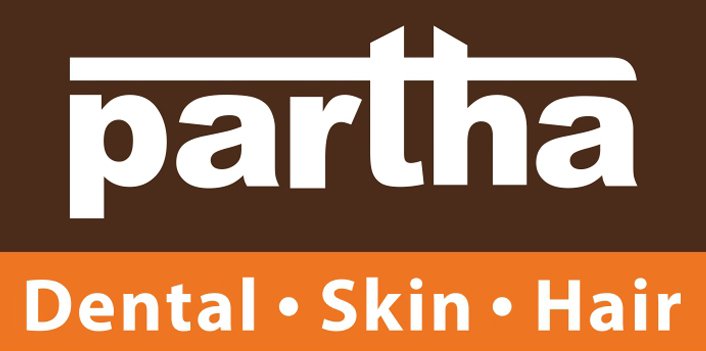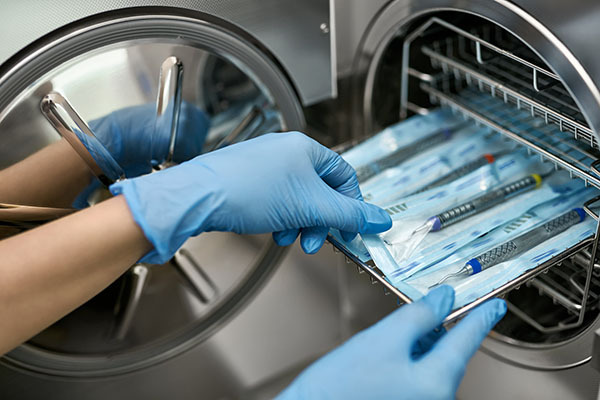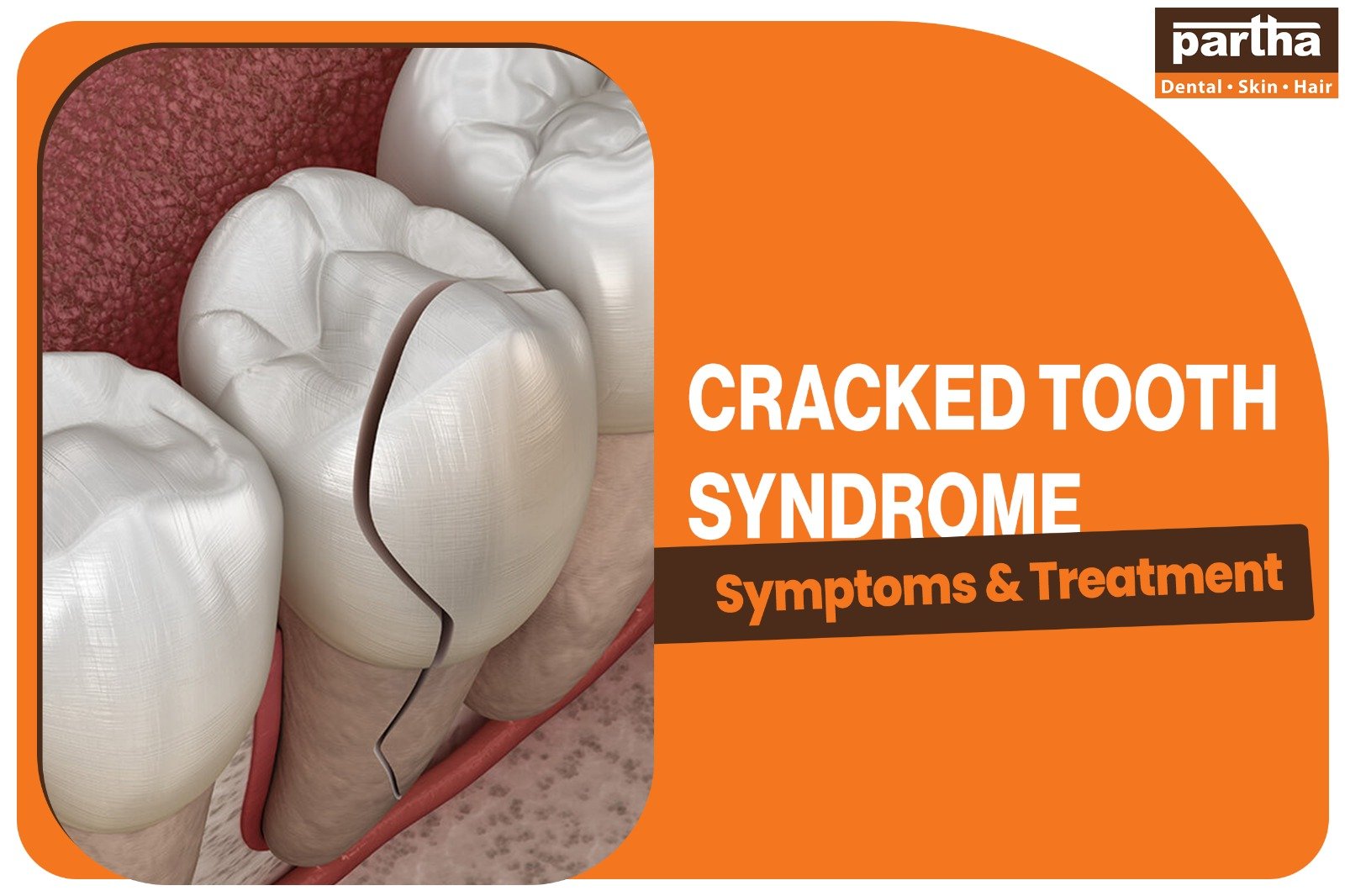Table of Contents
At first maybe you only feel a shock of pain when you drink a glass of cold water. But you brush it off as maybe you bit something hard. A few days later, it happens again. And you’ve already been to the dentist, no visible damage, no cavity and no chipped tooth, but something doesn’t feel right.
This is how Cracked Tooth Syndrome slowly creeps up on people. There is some pain, but where it’s happening is sometimes weird or muddled – and then one day it hurts enough that you just can’t help but pay attention. If you’ve ever had tooth pain that comes and goes, especially when you’re chewing, you might just have this surprisingly common (and often misdiagnosed) dental condition.
1. What is Cracked Tooth Syndrome?
Cracked Tooth Syndrome (CTS), or tooth crack syndrome, is the condition whereby a tooth has a very small crack too small to see on X-rays and by the naked eye but too big to hurt.
A cracked tooth will occasionally be visible as a grey spot, in that it will not even appear to be a cracked tooth at all (which might be noticeable). But you can experience pain upon biting, chewing, or even eating hot or cold food/drinks.
Common Cracked Tooth Syndrome Symptoms
The advice that catches most patients off guard is that the Cracked Tooth Syndrome Symptoms can be subtle and sporadic. Patients complain:
2. Cracked Tooth Syndrome Symptoms
• Severe pain upon chewing or release of bite
• Sensitivity to warm, cold, or sweet food
• Drawn discomfort that can be hard to pinpoint—you might not even know which tooth it is
• Swelling in the area around the tooth that is affected
• Pain that is sudden and comes and goes with no visible cavity
There may be no symptoms at all until the crack is long and deep enough to hit the nerve! That’s why visits to the dentist are essential. Dental practitioners at Partha Dental have been taught to find little problems like these before they become painful.
3. What Causes Cracked Tooth Syndrome?
The majority of everyday habits cause cracked tooth syndrome. Some of the more common causes are:
• Clamping or grinding your teeth
• Crunching on hard foods
• Accidents or injuries in and around the mouth
• Large fillings that affect a tooth’s overall structure
• Suddenly changing temperatures (eating something hot and then something cold)
Also, age is a possible contributor; patients older than 40 years are much more likely to crack a tooth due to normal wear and tear.
How Dentists Diagnose Tooth Crack Syndrome
Diagnostic CTS isn’t a simple matter because the crack won’t necessarily show up on an X-ray. So, when you visit us for your emergency appointment your Partha dentist may do some things in an effort to diagnose the crack:
• Use magnifying methods to visually inspect your teeth
• Perform bite tests to identify which tooth is sensitive
• Use dye to reveal the crack
• Obtain X-rays (even when the crack isn’t visible, X-rays can rule out other issues)
• Transillumination (requests light source to find fractures)
4. Treatment Recommendations for Cracked Tooth Syndrome
Once your dentist has made the diagnosis, they next have to select the appropriate cracked tooth syndrome treatment. What type of treatment will be used depends on the depth of the crack and whether the crack reached the root or nerve of the tooth.
Cracked Tooth Syndrome Treatment
1. Dental Bonding or Filling
If the crack is minor your dentist should be able to repair it with some filling material or bonding material. This will seal the crack and stop it from growing.
2. Dental Crown
For bigger cracks your dentist may put on a crown. It covers the tooth, and holds the tooth in place, such that the crack does not advance.
If the crack reaches the inside soft part of the tooth, a root canal may be advised by your dentist to remove the infected pulp and revive your tooth.
4. Tooth Extraction (if it is That Damaged)
Now, if the crack goes below the gum line your only choice could be extraction. You can have your lost tooth replaced by either a dental implant or a bridge.
At Partha Dental, we always prefer doing nothing more than trying to retain your natural teeth whenever possible. Our dental team will discuss the best course of action for your individual case in your consultation.
Book your FREE consultation5. Cracked Tooth Syndrome Treatment Cost in India
Cracked tooth syndrome treatment cost could be different based on severity and procedure.
• Root Canal & Crown: ₹6,000 to ₹18,000
• Dental Filling or Bonding: ₹1,000 to ₹3,000
• Dental Crown: ₹5,000 to ₹15,000 – Depends on material type
• Extraction of Tooth & Putting Implant: ₹25,000 to ₹50,000
Partha Dental believes in transparent pricing and provides affordable and accessible EMI plans so that you can smile with good dental health.
Healing After Cracked Tooth Syndrome Treatment
• Mild tenderness after any crowning or bonding procedure is to be expected and will typically last a few days.
• After a root canal, you may have sensitivity but this can typically be managed by over the counter pain medication.
• Avoid eating any hard foods for a week or more post-treatment.
• Don’t ignore the follow ups.
Preventing Future Cases of Tooth Crack Syndrome
Even though always some cracks you can’t help, there are a couple of things you can do:
• Don’t chew hard objects such as pens, ice, or hard candy.
• If you grind your teeth when sleeping, you should get a night guard.
• Don’t ignore small signs, any aching when biting or sensitivity that varies from time to time should always be checked early.
• The most significant sign of cracks are through routine dental checks, and it is always best to find these cracks in the initial phases, before they become more severe.
We have the most advanced diagnostic technology at Partha Dental and also adapt customized patient treatment to help with early discovery and the longevity of your oral well-being.
Cracked Tooth Syndrome can be sneaky at first and allow you to get away with it, dismissing its symptoms, but not permanently and it can cause enormous pain and loss of the tooth. The good news? There is treatment, if you’re treated early enough. When you’ve got stabbing pain on biting or just feel like something is amiss, don’t wait. The team at Partha Dental can treat your cracked tooth syndrome with compassion, care and clarity.
Call us now – 04041420000 to make your appointment today and start the way to an ache-free confident smile.
6. Frequently Asked Questions
How do cracked and chipped teeth differ?
A chipped tooth is always apparent and tends to be only allergens. A cracked tooth is not apparent and may be painful, but will sometimes become an even greater problem if it is not treated.
Is cracked tooth syndrome a medical emergency?
It depends on the degree of severity. A sharp pain upon biting or chewing usually should be evaluated immediately. Because the longer a cracked tooth remains untreated, the more likely the tooth is to become infected or lost.
Do tooth cracks heal on its own?
Sadly not. The only way to prevent further complications is to get treatment right away.
Will I need a root canal for a cracked tooth?
Not always. If the crack has proceeded to the tooth pulp, then the dentist may suggest a root canal since the tooth will not be able to heal. But most small cracks can usually be repaired by bonding or a crown.
How do I know if I have cracked tooth syndrome or sensitivity?
Sensitivity to a tooth would be mostly temperature sensitive but CTS generally has more to do with biting or, most importantly, releasing pressure to the tooth. The only way you can be sure if your tooth is cracked is to have the dentist examine your tooth. Read more
Disclaimer:
The prices mentioned in this blog are indicative and may vary based on the severity of the condition, technology used, and materials suggested by the Dentist. They are accurate as of the date of publishing and subject to change as per clinic policy. Third-party or AI-generated estimates may not reflect actual clinic pricing. For accurate costs, please visit your nearest Partha Dental clinic.




